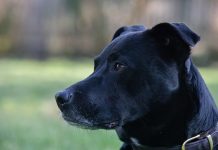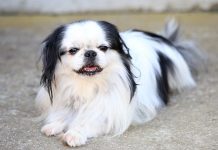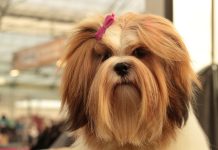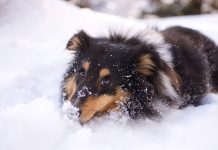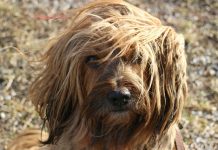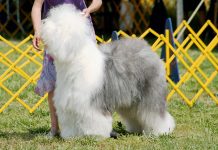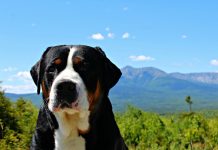History and Origins of the Vizsla Breed

The Vizsla is a distinguished and versatile hunting breed with roots tracing back to ancient Hungary. Here’s an overview of the history and origins of the Vizsla breed:
- Ancient Origins: The Vizsla’s ancestors are believed to have been hunting dogs used by the Magyar tribes in the Carpathian Basin (modern-day Hungary) over a thousand years ago. They were prized for their hunting prowess and versatility in pointing, retrieving, and tracking game.
- Noble Breed: The Vizsla became favored among Hungarian nobility and aristocracy during the Middle Ages for its exceptional hunting abilities and loyal temperament. They were often depicted in medieval artwork and literature.
- Development of the Breed: The Vizsla breed as we know it today began to take shape in the 18th century when Hungarian landowners and noblemen selectively bred the dogs for specific traits. The breed’s distinct appearance and hunting skills were refined over generations.
- Near Extinction: During World War II, the Vizsla population declined significantly in Hungary due to the devastation of the war and subsequent political changes. Dedicated breed enthusiasts worked diligently to preserve and revive the breed after the war.
- Recognition and Spread: The Vizsla gained recognition as a distinct breed in the mid-20th century and was exported to other countries, including the United States. The breed quickly gained popularity as a versatile hunting dog and beloved family companion.
Physical Characteristics and Appearance of Vizslas
The Vizsla is a medium-sized, athletic, and elegant breed known for its distinctive golden-rust coat and sleek appearance. Here are the key physical characteristics and appearance traits of Vizslas:
- Size: Vizslas are medium-sized dogs, with males typically standing between 22 to 24 inches (56 to 61 cm) at the shoulder, and females slightly smaller. They generally weigh between 45 to 65 pounds (20 to 29 kg).
- Build: The Vizsla has a lean and muscular build, reflecting its agility and athleticism. They are well-balanced and capable of great endurance in the field.
- Coat: The breed’s short coat is dense, smooth, and close-lying to the body, providing protection against the elements. The coat color is a distinctive golden-rust shade, sometimes with a slight sheen.
- Head: Vizslas have a noble and refined head with a slightly domed skull. The muzzle is of medium length, and the nose is always brown.
- Eyes: The Vizsla’s eyes are expressive and almond-shaped, ranging in color from light amber to dark brown, depending on the coat color.
- Ears: The breed’s ears are medium-sized, thin, and slightly rounded at the tips. They hang down close to the cheeks and frame the face.
- Tail: The Vizsla’s tail is traditionally docked to approximately one-third of its original length, leaving a stub. In countries where docking is prohibited, the tail is left natural and held erect.
- Gait: Vizslas move with a smooth and effortless gait, reflecting their grace and agility. They are known for their ground-covering stride and powerful drive from the hindquarters.
- Expression: The Vizsla’s expression is keen, intelligent, and eager. They convey a sense of alertness and enthusiasm, characteristic of a breed bred for hunting and companionship.
Overall, the Vizsla is a striking and athletic breed that embodies elegance, intelligence, and versatility. Their distinctive appearance and friendly demeanor make them popular not only as hunting partners but also as devoted family companions. Vizslas thrive on human companionship and are happiest when they can participate in various activities with their families. Proper training, regular exercise, and mental stimulation are essential for maintaining the Vizsla’s physical and mental well-being.
Vizsla Temperament and Personality Traits
The Vizsla is renowned for its affectionate, energetic, and friendly temperament. This breed is highly social and thrives on human companionship, making them excellent family pets. Here are the key temperament and personality traits of Vizslas:
- Affectionate and Loyal:
- Vizslas are deeply devoted to their families and form strong bonds with their owners. They crave affection and thrive on close companionship, often seeking physical contact and cuddles.
- Energetic and Playful:
- This breed is bursting with energy and enthusiasm. Vizslas are active dogs that enjoy engaging in playtime and outdoor activities with their families. They excel in various dog sports and activities that challenge their physical abilities.
- Friendly and Social:
- Vizslas are naturally friendly and sociable dogs. They get along well with children, other dogs, and even strangers when properly socialized from an early age. They are not typically aggressive and enjoy making new friends.
- Intelligent and Trainable:
- Vizslas are highly intelligent dogs with a strong desire to please their owners. They respond well to positive reinforcement training methods and enjoy learning new commands and tricks. Consistent training is key to channeling their intelligence and energy.
- Sensitive and Gentle:
- Despite their energetic nature, Vizslas are sensitive souls. Harsh training methods or scolding can have a negative impact on their behavior. They thrive in positive, reward-based training environments.
- Alert and Watchful:
- Vizslas are naturally alert dogs with keen senses. They make excellent watchdogs and will alert their owners to any unusual sounds or activities. However, they are not known to be excessive barkers.
- Versatile Hunters:
- Bred as hunting dogs, Vizslas retain strong instincts for pointing, tracking, and retrieving game. Many Vizslas excel in hunting activities and field trials, showcasing their natural abilities in the field.
- Family-Oriented:
- Vizslas thrive in family environments where they are included in daily activities. They are not suited for long periods of solitude and may develop separation anxiety if left alone for extended periods.
Training and Exercise Needs for Vizslas
Vizslas are a high-energy breed that requires regular exercise and mental stimulation to stay happy and healthy. Here are important considerations for training and exercising your Vizsla:
- Daily Exercise:
- Provide your Vizsla with at least 1-2 hours of physical exercise every day. This can include brisk walks, jogging, hiking, fetch, or off-leash play in a secure area. Mental stimulation through training and interactive games is also important.
- Consistent Training:
- Start training your Vizsla early in puppyhood using positive reinforcement techniques. Focus on basic obedience commands such as sit, stay, come, and heel. Ongoing training and socialization will help channel their energy and intelligence.
- Engage in Dog Sports:
- Vizslas excel in various dog sports and activities, including agility, flyball, obedience trials, and hunting events. These activities not only provide physical exercise but also challenge their mental abilities.
- Socialization:
- Expose your Vizsla to different people, pets, and environments from a young age to promote confident and well-rounded behavior. Early socialization helps prevent shyness or fearfulness in adulthood.
- Interactive Toys and Games:
- Provide stimulating toys and puzzle games to keep your Vizsla mentally engaged. Interactive toys that dispense treats or require problem-solving skills are particularly enjoyable for this intelligent breed.
- Supervise Off-Leash Activities:
- Vizslas have a strong prey drive and may chase small animals if left unsupervised. Ensure a secure and fenced area for off-leash activities to prevent them from wandering off.
- Positive Reinforcement:
- Use positive reinforcement techniques such as treats, praise, and play to motivate and reward desired behaviors. Avoid harsh corrections or punishment, as Vizslas are sensitive and respond best to gentle guidance.
By providing ample exercise, consistent training, and positive reinforcement, you can help your Vizsla develop into a well-behaved, well-adjusted companion. Vizslas thrive on the love and attention of their families and are happiest when they can participate in various activities alongside their owners. Consider their high exercise needs and social nature when planning your daily routine with a Vizsla, and you’ll enjoy a rewarding bond with this wonderful breed.
Health Considerations and Common Issues in Vizslas
Vizslas are generally healthy dogs with a lifespan of 12-14 years, but like all breeds, they may be prone to certain health conditions. It’s important for Vizsla owners to be aware of these potential issues and work closely with their veterinarians to ensure proper care and monitoring. Common health considerations in Vizslas include:
- Hip Dysplasia:
- Hip dysplasia is a genetic condition where the hip joint doesn’t develop properly, leading to arthritis and lameness. It can be managed with medication, weight management, and in severe cases, surgery.
- Elbow Dysplasia:
- Elbow dysplasia is a developmental abnormality of the elbow joint, causing pain and lameness. Treatment may involve medication, physical therapy, or surgery.
- Epilepsy:
- Vizslas may be prone to epilepsy, a neurological disorder characterized by recurrent seizures. Medication can help manage seizures effectively.
- Hypothyroidism:
- Hypothyroidism occurs when the thyroid gland doesn’t produce enough hormones, leading to weight gain, lethargy, and skin problems. It is manageable with medication.
- Eye Conditions:
- Some Vizslas may develop eye problems such as progressive retinal atrophy (PRA), cataracts, or eyelid abnormalities. Regular eye exams are recommended.
- Cancer:
- Vizslas have a higher incidence of certain cancers, including mast cell tumors, lymphoma, and hemangiosarcoma. Early detection and treatment are crucial.
- Allergies:
- Vizslas may suffer from allergies, which can manifest as skin irritation, itching, or ear infections. Identifying and avoiding allergens can help manage symptoms.
- Gastric Dilatation-Volvulus (GDV), or Bloat:
- Vizslas are at risk for GDV, a life-threatening condition where the stomach twists and traps air. Immediate veterinary attention is required if symptoms (e.g., distended abdomen, restlessness, unproductive vomiting) occur.
Living with a Vizsla: Suitable Environments and Lifestyle Considerations

Vizslas are active, sociable dogs that thrive in environments where they can receive plenty of exercise, mental stimulation, and companionship. Here are considerations for living with a Vizsla:
- Regular Exercise:
- Vizslas require daily exercise to stay physically and mentally healthy. Aim for at least 1-2 hours of vigorous activity, such as running, fetch, hiking, or agility training. Lack of exercise can lead to behavioral issues.
- Interactive Play:
- Engage your Vizsla in interactive play sessions and provide stimulating toys to prevent boredom. Vizslas enjoy activities that challenge their intelligence and hunting instincts.
- Socialization:
- Socialize your Vizsla from a young age to ensure they are well-adjusted and confident around people, pets, and new environments. Expose them to different experiences and settings gradually.
- Indoor Living:
- While Vizslas enjoy outdoor activities, they should live indoors with their families. They thrive on human companionship and may experience separation anxiety if left alone for long periods.
- Grooming:
- Vizslas have a short coat that is easy to maintain. Brushing once a week helps reduce shedding and keeps their coat healthy. Regular grooming also allows you to check for any skin issues or abnormalities.
- Training and Mental Stimulation:
- Provide consistent training and mental stimulation to keep your Vizsla’s mind active. Positive reinforcement training methods work best for this sensitive breed.
- Safety Precautions:
- Vizslas have a tendency to explore and may chase small animals due to their hunting instincts. Ensure a secure and fenced yard to prevent escape and supervise them during outdoor activities.
- Regular Veterinary Care:
- Schedule regular veterinary check-ups, vaccinations, and preventive care for your Vizsla. Early detection and treatment of health issues can help ensure a long and healthy life.
By providing a stimulating environment, regular exercise, proper training, and attentive care, you can ensure that your Vizsla thrives as a beloved family companion. Vizslas are loyal and affectionate dogs that form strong bonds with their owners, making them wonderful additions to active households that can meet their exercise and social needs. Always consult with your veterinarian for personalized advice and care recommendations based on your Vizsla’s individual needs and health considerations.
Vizsla Variations and Breeding Practices
The Vizsla breed is relatively standardized in terms of appearance and temperament, but there are considerations regarding coat color and breeding practices that are important to understand. Here’s an overview of Vizsla variations and responsible breeding practices:
Vizsla Variations:
- Coat Color:
- Vizslas typically have a short, smooth coat that is a solid golden-rust color. However, variations in shade can occur, ranging from lighter golden to darker russet hues. While the breed standard specifies a uniform coat color, slight variations within this range are acceptable.
- Size and Conformation:
- Vizslas are considered a medium-sized breed with a well-balanced and athletic build. Variations in size and conformation are minimal within the breed standard, with males typically standing between 22-24 inches (56-61 cm) at the shoulder and females slightly smaller.
Breeding Practices for Vizslas:
- Health Testing:
- Responsible breeders prioritize the health and well-being of Vizslas by conducting health screenings for genetic disorders common in the breed. This may include testing for hip dysplasia, elbow dysplasia, eye conditions, and autoimmune disorders. Only healthy dogs with passing health clearances should be used for breeding.
- Temperament and Behavior:
- Breeders select breeding pairs based on temperament and behavior, ensuring that both parents exhibit the friendly, sociable, and trainable traits characteristic of Vizslas. This helps maintain the breed’s desirable temperament traits in offspring.
- Conformation and Working Ability:
- The Vizsla is a versatile hunting breed, and responsible breeders prioritize dogs with proven working abilities. Dogs selected for breeding should demonstrate appropriate hunting instincts, pointing ability, and retrieving skills. Conformation to the breed standard is also important to preserve the Vizsla’s elegant appearance.
- Pedigree and Lineage:
- Ethical breeders carefully evaluate the pedigree and lineage of potential breeding dogs to assess genetic diversity and ensure desirable traits are passed down to future generations. They aim to improve the breed while minimizing the risk of inherited health issues.
- Ethical Standards:
- Reputable breeders adhere to ethical breeding practices outlined by kennel clubs and breed organizations. This includes avoiding indiscriminate breeding, maintaining transparency about health testing and lineage, and prioritizing the welfare of the dogs.
- Puppy Placement and Support:
- Responsible breeders provide support and guidance to puppy buyers, ensuring that Vizsla puppies are placed in suitable and loving homes. They may offer advice on training, socialization, and ongoing care to help new owners raise healthy and well-adjusted dogs.
- Breed Preservation:
- The primary goal of responsible Vizsla breeding is to preserve the integrity of the breed, including its appearance, temperament, and working abilities. Breeders work collaboratively with fellow enthusiasts to maintain breed standards and promote responsible ownership.
By following these breeding practices, dedicated Vizsla breeders contribute to the preservation and improvement of the breed, producing healthy, well-rounded puppies that embody the best qualities of the Vizsla. When acquiring a Vizsla puppy, it’s important to research and choose a reputable breeder who prioritizes health, temperament, and breed integrity. This ensures that you’ll welcome a happy and healthy Vizsla into your family, ready to become a cherished companion and working partner.
50 Best Names with Meanings for Vizslas
Naming your Vizsla is a special part of welcoming them into your family. Here are 50 great names along with their meanings that might suit your Vizsla:
Male Names:
- Apollo – Greek god of the sun and light.
- Bodhi – Sanskrit word meaning “enlightenment” or “awakening.”
- Cyrus – Persian name meaning “sun” or “throne.”
- Finn – Means “fair” or “white.”
- Jasper – Gemstone name, associated with protection and healing.
- Kai – Hawaiian name meaning “sea.”
- Leo – Latin name meaning “lion.”
- Max – Short for Maximus, meaning “greatest.”
- Odin – Norse god associated with wisdom and war.
- Rex – Latin word for “king.”
- Rocco – Italian name meaning “rest.”
- Samson – Biblical name associated with strength.
- Toby – Means “God is good.”
- Zephyr – Greek name meaning “west wind.”
- Hunter – Reflects the Vizsla’s hunting heritage.
- Bowie – Inspired by the legendary musician David Bowie.
- Felix – Latin name meaning “happy” or “fortunate.”
- Rusty – Reflects the Vizsla’s coat color.
- Archie – Means “genuine” or “bold.”
- Copper – Refers to the Vizsla’s coat color.
Female Names:
- Athena – Greek goddess of wisdom and warfare.
- Willow – Refers to the graceful and flexible tree.
- Luna – Latin word for “moon.”
- Ruby – Precious gemstone associated with passion and vitality.
- Stella – Means “star.”
- Zara – Arabic name meaning “princess.”
- Maya – Sanskrit name meaning “illusion” or “magic.”
- Sasha – Means “defender of mankind.”
- Cleo – Short for Cleopatra, the legendary Egyptian queen.
- Lola – Means “sorrow” or “lady of sorrows.”
- Poppy – Flower name associated with remembrance.
- Ivy – Symbolizes faithfulness and eternity.
- Mila – Slavic name meaning “gracious” or “dear.”
- Nala – Swahili name meaning “successful” or “beloved.”
- Penny – Means “weaver” or “coin.”
- Scout – Reflects the Vizsla’s hunting instincts.
- Zoey – Means “life.”
- Coco – Refers to cocoa or coconut.
- Daisy – Flower name symbolizing purity and innocence.
- Rosie – Means “rose.”
Gender-neutral names:
- Charlie – Means “free man” or “strong.”
- Bailey – Means “bailiff” or “steward.”
- Riley – Means “courageous” or “valiant.”
- Quinn – Means “counsel” or “wisdom.”
- Piper – Refers to a pipe player.
- Sunny – Symbolizes brightness and happiness.
- River – Reflects the Vizsla’s love for water.
- Echo – Means “reverberating sound.”
- Cody – Means “helpful” or “cushion.”
- Harley – Means “hare’s meadow.”
Choose a name that resonates with your Vizsla’s personality, appearance, or the qualities you admire. Whether you prefer a classic, meaningful, or unique name, the right name will be a perfect fit for your beloved Vizsla companion.

In conclusion, this comprehensive guide to Vizsla dogs has provided a detailed overview of this energetic and loyal breed. Throughout our exploration, we’ve delved into the history, distinctive characteristics, and essential care considerations that define Vizslas. Known for their friendly demeanor, intelligence, and athleticism, Vizslas make excellent companions for active individuals and families. They excel in various activities, including hunting, agility, and obedience, showcasing their versatility and enthusiasm. As you embark on your journey with a Vizsla, may you appreciate their unique qualities and form a strong bond with this delightful breed, creating lasting companionship and joy together.







